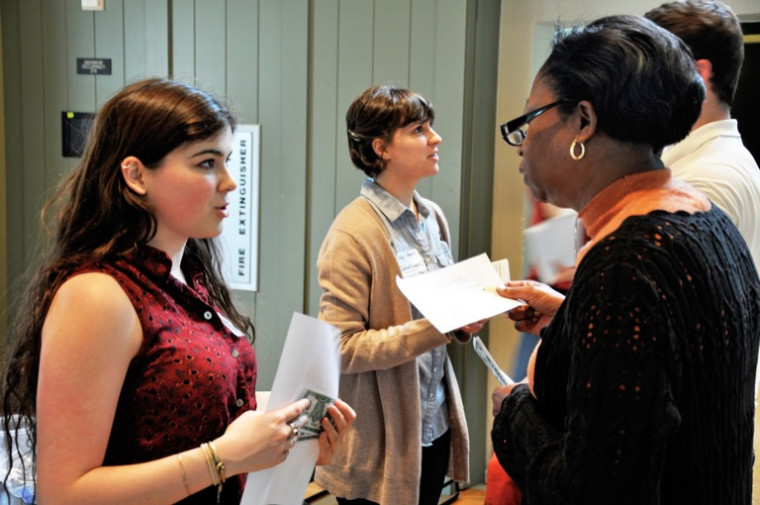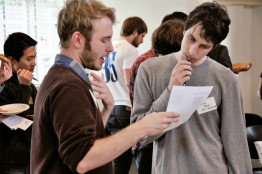Technologies of the Future
Open gallery

Do you understand the mechanics behind a selfclamping ski boot? Or why hydrophobic kale wax might make a good hair spray? You would if you’re enrolled in Technologies of the Future, a new joint offering of the biology and chemistry departments.
The course, which was developed with funding from the W.M. Keck Foundation and the Howard Hughes Medical Institute, is geared toward nonscience majors. It focuses on the creative, entrepreneurial, and technical processes that lead to innovations in technology, as well as the science behind those innovations.
“Some nonscience students feel implicitly criticized in their choice of majors,” says Kellar Autumn, professor of biology and a codesigner and coteacher of the course. “We’re trying to empower these students by showing them that interdisciplinary teams in science and industry need their particular expertise.”
Over the course of the semester, students develop a basic understanding of the biological, chemical, and materials science at the foundation of new technologies. They then develop their own products and figure out ways to introduce them to the world.

“The design of the products is completely up to them,” says Anne Bentley, assistant professor of chemistry, who, along with Autumn and Jonathan Puthoff, a postdoctoral research associate, spent a year designing the course. Students are encouraged to take advantage of their “science consultants,” the laboratory’s teaching assistants, who are all junior and senior science majors, to make sure their products are scientifically sound. “It’s a process similar to what they would encounter if they were actually working in the technology industry,” says Bentley.
The students themselves are struck by the course’s unusual model. “It isn’t what you would expect in a science class,” says Knhik Haefner CAS ’12. “I’m an art major, and I’m doing some of my most creative work in this lab science course.”
The course’s future is still under discussion, but Autumn, Bentley, and Puthoff all hope to offer it again, particularly because it is so consistent with the college’s mission. “Our goal at Lewis & Clark,” says Autumn, “is to train the leaders and innovators of the future.”
—by Erica Terpening-Romeo CAS ’14
More L&C Magazine Stories
Lewis & Clark Magazine is located in McAfee on the Undergraduate Campus.
MSC: 19
email magazine@lclark.edu
voice 503-768-7970
fax 503-768-7969
The L&C Magazine staff welcomes letters and emails from readers about topics covered in the magazine. Correspondence must include your name and location and may be edited.
Lewis & Clark Magazine
Lewis & Clark
615 S. Palatine Hill Road MSC 19
Portland OR 97219

